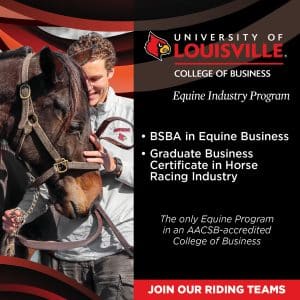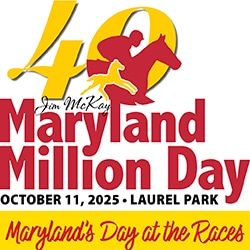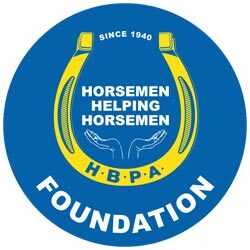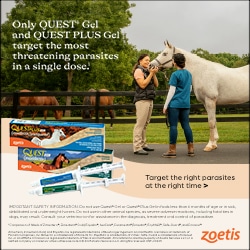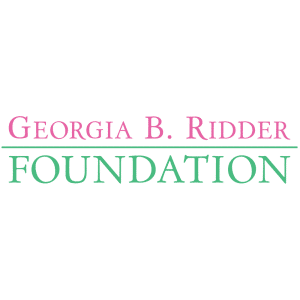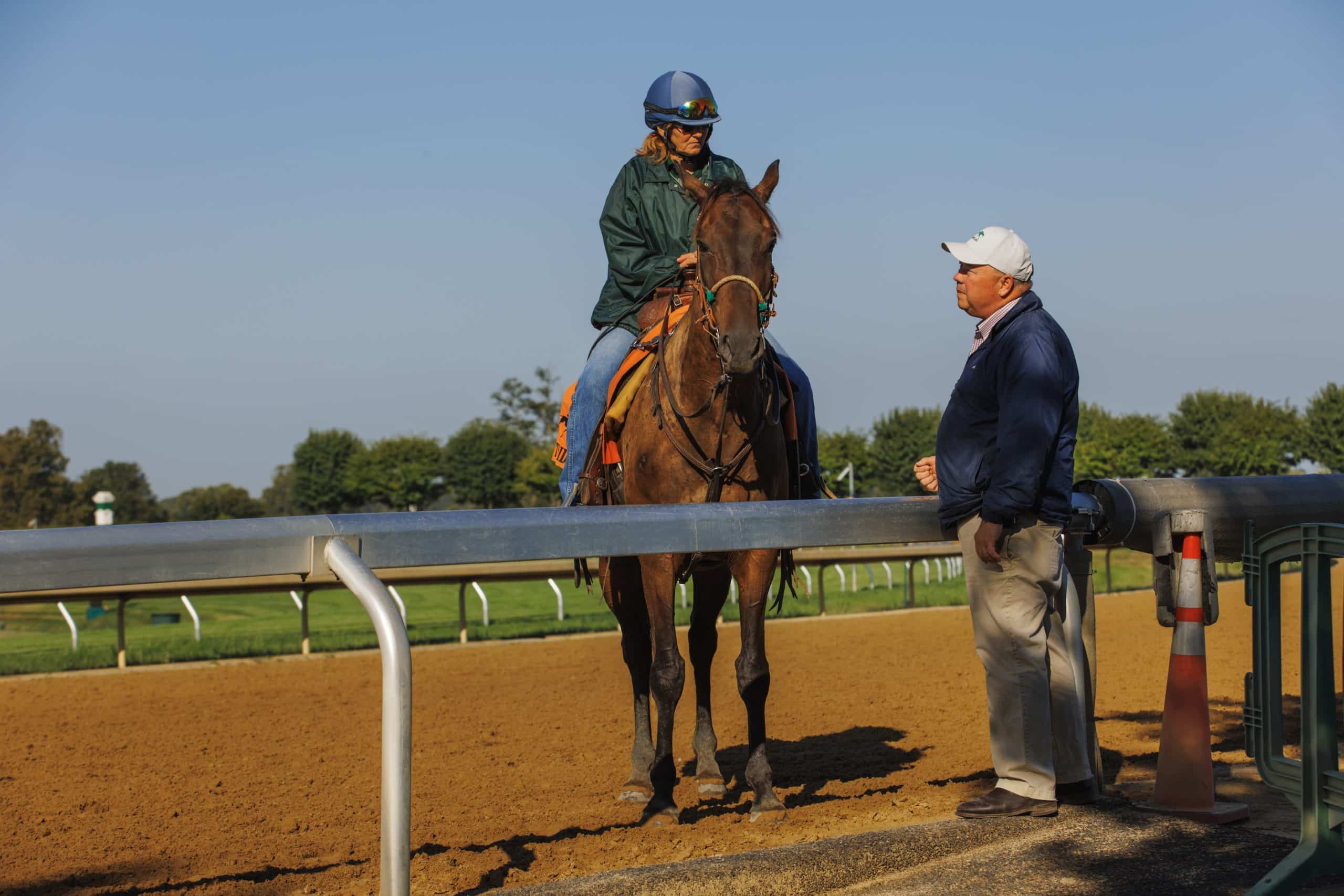
Everyone from the outriders to the veterinarians are involved in safety at the racetrack. “There is an incredible level of dedication that exists today across racetrack regulations, racing commissions and the intersection between private practitioners on behalf of the horse,” says Stuart Brown, DVM, vice president of equine safety at Keeneland. Photo courtesy Keeneland
From his first wobbly steps to his race career, your OTTB has had several dedicated veterinarians in his corner.
In this article we’ll cover veterinary checks and other safeguards that help ensure racehorse well-being. Before diving into that, though, let’s briefly uncover the different roles veterinarians play – each working together – in the world of racehorse medicine.
Attending Veterinarian
“In my role, I am sort of like a team doctor,” says Clayton McCook, DVM, MS, associate veterinarian within the Racehorse Division of Equine Sports Medicine & Surgery, in Oklahoma. “The general health of the horse is our priority. Our practice typically provides the veterinary services for a trainer’s entire barn. Clients will have us look at a horse before they decide to enter it, to decide if they’re fit to race. We as practicing veterinarians work hard to collaborate with each other to provide the highest level of care possible.”
With an attending veterinarian’s oversight, the goal is a horse never raises a red flag during a prerace exam. Attending veterinarian and private practitioner can be interchangeable terms.
Track Veterinarian
On race day, the track veterinarian is present and responsible for conducting prerace examinations.
“Track veterinarians historically work for the racing organization and can be spotted in the saddling paddock and watching horses warm up. Both the track veterinarian or the regulatory veterinarian can provide the prerace exam,” explains John Chancey, DVM, executive director and director of equine welfare with the Oklahoma Horse Racing Commission, in Oklahoma City. “They are not responsible for the general care of each horse on the grounds; that is the care of the attending veterinarian.”
Regulatory Veterinarian
The regulatory veterinarian enforces rules and regulations governing the sport, mainly those related to horse health and medication. “Regulatory veterinarians are employed by the racing commissions themselves, and they are in charge of every race day,” says Stuart Brown, DVM, vice president of equine safety at Keeneland and chairman of the University of Kentucky Gluck Equine Research Foundation, both in Lexington. “The racetrack itself is under the control of the regulatory veterinarians; this includes the equine ambulances and the test barn. Regulatory veterinarians maintain the integrity of horse racing, as the advocate for each horse’s safety and welfare on every race day.”
The regulatory veterinarian, state veterinarian and official veterinarian for the racing commission can be interchangeable terms depending on jurisdictions.
Association Veterinarian
An association veterinarian is directly affiliated with the racetrack entity itself, overseeing horse health, regulatory compliance, biosecurity, track safety and more. “Here at Keeneland, I develop equine safety programs,” says Brown. “We have our own specific advocacy efforts, including a veterinary camera system in which 21 cameras, with 24/7 video surveillance, are monitoring horses from the minute their foot steps on the surface until they leave.”
While some interchanging responsibilities exist, these groups of veterinarians all work in stride together.
“There is an incredible level of dedication that exists today across racetrack regulations, racing commissions and the intersection between private practitioners on behalf of the horse,” says Brown.
Understanding Prerace Horse Examinations
A prerace examination is conducted on every horse entering a race. In the simplest sense, these exams offer a comprehensive evaluation of the horse’s health and suitability to enter the race. “Here at Keeneland, regulatory and racing veterinarians work closely with my team from an equine safety aspect,” says Brown. “We will have five to seven veterinarians every race day conducting 95 to 115 exams from 6:00 a.m. until 11:00 a.m.”
From the attending veterinarian to track, regulatory and association veterinarians, working together is key to success.
“It’s very important to have that good rapport and relationship with private practitioners on the backside,” says Chancey. “They know that horse’s history day in and day out. I can pick up the phone and call them and say, ‘I’m seeing this, what are your thoughts?’ There’s a lot of information for us to evaluate the horse to help make the best decision for that horse going forward.”
He shared more on what a prerace exam entails and what veterinarians are monitoring:
Jog-out (horse is walked/jogged)
- Watches how the horse leaves his stall and the level of relaxation or stiffness.
- Reviews for any asymmetry, lameness in the gait, a wider gait or bobbing of the head, which can indicate lameness.
- Ensures hips have a smooth motion and travel evenly.
- Observes shoulder movement and any level of a wider stride, which could indicate sore muscles and ligaments.
Physical examination
- Observes the animal’s mentation (how he responds to stimuli around him) before looking at the horse’s health history.
- Performs a cursory exam of the entire body.
- Reviews the horse’s behavior and physical appearance for any abnormalities.
Palpates all four limbs and back
- Feels shoulders, musculature of the back, hips and stifles for any abnormalities.
- Palpates the knees and checks for any inflammation or fluid swelling in the joints.
- Palpates cannon bones, ankles (fetlock joint) and feet, feeling for heat, swelling and inflammation.
Flexion test of all legs
- Flexes limbs with a consistent amount of pressure.
- Uses hands as eyes for feeling any abnormalities of the legs during flexion.
- Flexes the knees, hocks and fetlocks, feeling for any swelling or sensitivities in the tendons and suspensory ligaments.
- Feels the heel, hoof and behind the pastern, and observes the shape of the foot, length of toe and checks how secure the shoe is.
- Examines the fetlocks, looking for any possible osselets (puffiness around the fetlock joints) and checks the cannon bone for bucked shins (evident by pain and swelling on the front of the cannons).
Heart and respiratory auscultation
- Using a stethoscope, listens to the horse’s heart and lungs to assess cardiovascular and respiratory function.
- Checks for any irregularities, such as arrhythmias or murmurs.
- Assesses the horse’s respiratory rate and listens for any abnormalities, such as breathing patterns indicative of respiratory conditions or respiratory infections.
Horses Getting On and Off ‘The Vet’s List’
Horses might be labeled “on the vet’s list” for a multitude of reasons, from an episode of exercise-induced pulmonary hemorrhage (EIPH or bleeding in the lungs) to lameness issues. Getting off the vet’s list typically requires a predetermined period of rest and time off, any necessary diagnostics and X-rays, followed by an appointment with a regulatory veterinarian.
“The regulatory veterinarian watches the horse work at speed, and after that work, the regulatory vet will pull blood and/or urine to send off for testing,” explains McCook. “When working a horse off the vet’s list, they have to be absent of therapeutic medications, like in a race – for instance, Bute (phenylbutazone) and Banamine (flunixin meglumine). Assuming the horse works comfortably and soundly, and the test comes back absent of any therapeutic substance, the horse is taken off the vet’s list by the regulatory veterinarian.”
The Details on Racehorse Drug Testing
To help ensure the safety and integrity of the sport, it is common for at least the first- and second-place horses to be drug tested following a race. Stewards could randomly select other horses from the field. Urine and blood collected are separated into at least two samples, and the primary sample goes to the lab for testing. Should it test positive, the secondary sample is sent for confirmation.
According to the American Veterinary Medical Association, “Thoroughbred racing’s first uniform, nationwide, anti-doping program officially launched March 27 [2023]. That day, the Federal Trade Commission (FTC) gave its final approval of the Anti-Doping and Medication Control (ADMC) Program through the Horseracing Integrity and Safety Authority (HISA). The ADMC rules explicitly divides substances on the Prohibited List into two categories: controlled medications, or therapeutic substances permitted outside of race day and other specific periods, and banned substances that should never be allowed in a horse.”
“They are testing for therapeutic medications just as much as illicit medications,” says McCook. “Some 99% of post-race samples are free of any illicit substances or therapeutic overages; of that 1% that are positive, 99% are for a therapeutic substance that is over the allowable threshold, not illicit.”
The Proof is in the Paddock
These focused efforts in support of racehorse safety have paid off in droves. The Equine Injury Database (EID) – funded entirely by The Jockey Club – tracks race-related musculoskeletal injuries, nonmusculoskeletal injuries and sudden deaths sustained during a race or 72 hours after a race.
“The EID first began reporting statistics for fatal injury in racing in 2009, when that number was its highest at 2.00/1,000 starts in Thoroughbred racing,” says Brown. “In 2023 most reports yielded a rate of 1.32/1,000 starts, a decrease of 34% in risk of fatal injury. Thus, 99.87% of all flat races in North America are completed without a fatality, with a rate of 1.07/1,000 starts reported for all those tracks which participate in reporting their statistics to the EID.
“This entire system of veterinary examinations to protect the horse is driving these injury rates down,” he continues. “There’s such a dedication on behalf of the industry to make a difference in the health of the racehorse.”
Brown and his wife, Jen Roytz, trainer and former executive director of the Retired Racehorse Project, own Brownstead Farm, in Versailles, Kentucky. With their combined love for and commitment to the Thoroughbred industry, they also focus on training and transitioning racehorses into their second careers.
“These are really gratifying moments in terms of what we’re doing for the racehorse. These things are being done to protect these horses and to help ensure these horses have careers beyond their racing career,” says Brown.




